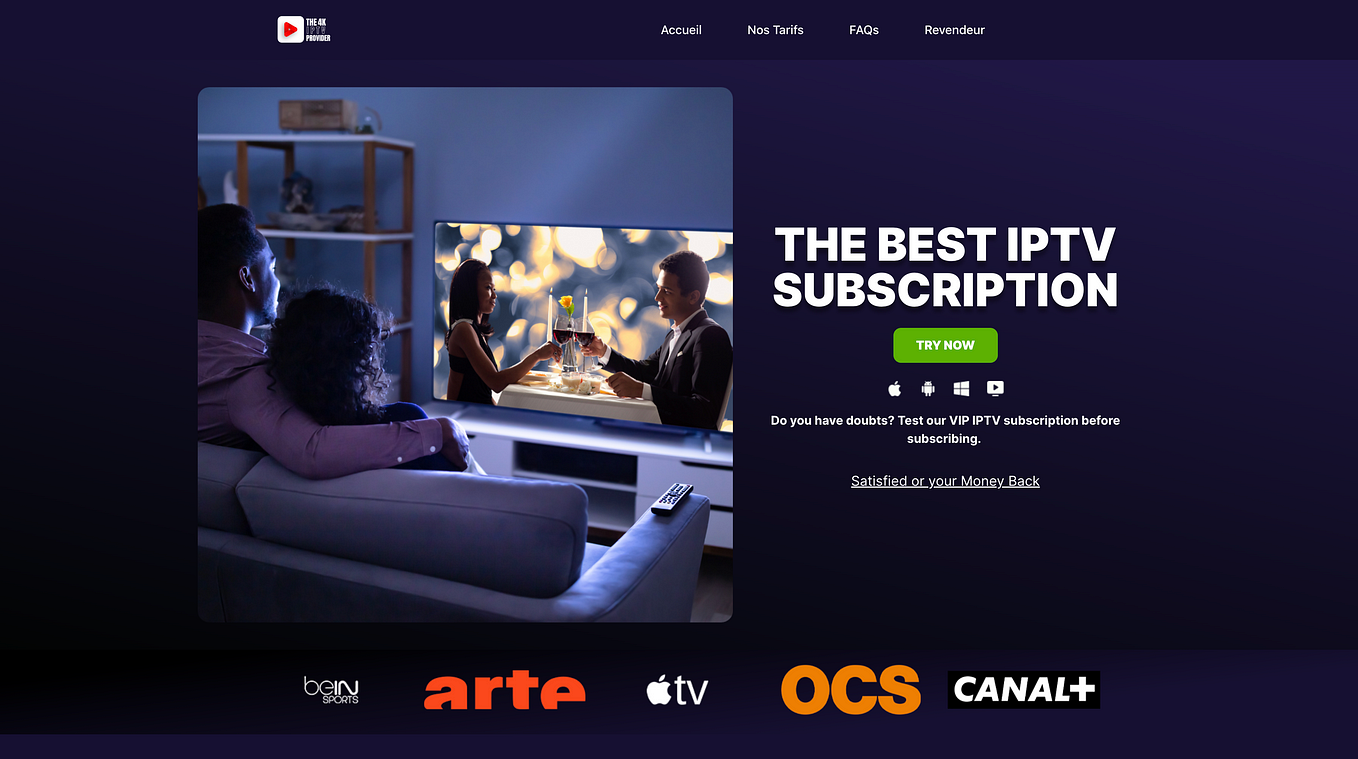Join the Streaming Change: IPTV Subscription for Limitless Home Entertainment
Wiki Article
How IPTV Works: A Step-by-Step Guide to Web Method Television Modern Technology
Net Protocol Television (IPTV) has reinvented the means we eat tv content, providing a new realm of possibilities with the power of the web. From the essential concepts of IPTV to the complicated procedure of material distribution, each action plays an essential function in guaranteeing a seamless viewing experience.IPTV Fundamentals
In comprehending IPTV fundamentals, it is essential to comprehend the essential functions of this innovation in providing television content over the web. IPTV, which stands for Internet Protocol Tv, makes use of Web Procedure (IP) networks to transfer television web content to customers' gadgets. Unlike typical methods of relaying tv web content through wire or satellite signals, IPTV streams media through high-speed net links.
Moreover, IPTV enables interactive abilities, such as video clip on demand (VOD) and digital program guides (EPG), boosting the customer experience by offering more control and flexibility in accessing content. Overall, comprehending the basics of IPTV establishes the foundation for discovering its even more innovative functionalities and the benefits it provides to contemporary tv intake.
Content Shipment Refine
Reliable web content shipment in IPTV systems includes a well-structured process that makes sure smooth transmission of television content over IP networks. The material shipment process in IPTV starts with the creation of the video content, which is then encoded into electronic style appropriate for IP transmission.
Middleware Functionality
With the combination of middleware, IPTV systems gain enhanced performance that streamlines individual interaction and material management. One of the crucial features of middleware in IPTV is to allow personalized individual experiences by providing functions such as interactive program overviews, video-on-demand services, interactive advertising and marketing, and individual choices management.
Tool Compatibility
Offered the crucial duty of middleware in making it possible for smooth communication and material administration in IPTV systems, an important element to think about is the compatibility of devices used for accessing the IPTV solutions. Tool compatibility is necessary for making sure a smooth individual experience and ideal performance when accessing IPTV web content.In the context of IPTV, tool compatibility describes the capacity of a tool to properly engage with the IPTV solution, display material properly, and support the necessary methods and codecs for streaming video clip material online. Various gadgets, such as smart Televisions, set-top boxes, smart devices, tablets, and computers, might have differing levels of compatibility with IPTV solutions.
To make sure a seamless watching experience, it is very important for users to pick devices that are compatible with the specific IPTV solution they are using. In addition, IPTV company need to provide assistance for a vast array of tools to deal with the varied needs of their customer base. By prioritizing tool compatibility, both users and solution providers can boost the overall IPTV experience.
High Quality of Service (QoS)
Taking into consideration the crucial duty of maintaining a high criterion of performance and dependability in IPTV systems, ensuring constant Top quality of Service (QoS) stays a basic aspect of the individual experience. QoS in IPTV describes the ability of the system to provide web content with minimal interruptions, high resolution, and quickly loading go times. To accomplish optimum QoS, various elements require to be addressed. Network bandwidth is vital to sustain premium video clip streaming without buffering or pixelation. In addition, latency, jitter, and packet loss should be lessened to boost the watching experience.Provider employ QoS devices such as website traffic prioritization, buffering, and mistake adjustment to maintain a stable IPTV solution. By focusing on IPTV web traffic over less time-sensitive information, providers can ensure smooth playback also throughout top usage hours. Buffering aids make up for network changes, while error improvement strategies improve data honesty.
Constant monitoring and optimization of QoS Resources criteria are vital to adapt to transforming network problems and user needs. Eventually, a robust QoS structure is vital for supplying a seamless and enjoyable IPTV experience to customers.
Conclusion
In final thought, IPTV runs through the transmission of television web content over internet protocol networks. High quality of Solution plays an essential function in keeping the performance and reliability of IPTV services - IPTV subscription.Report this wiki page